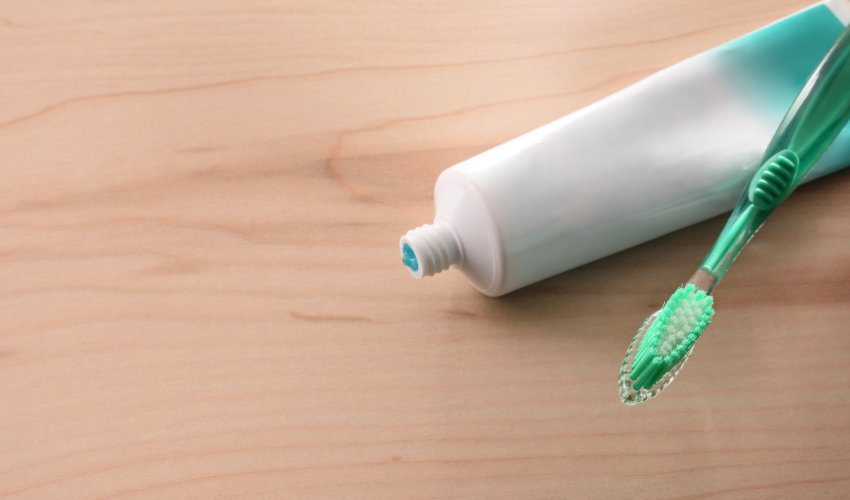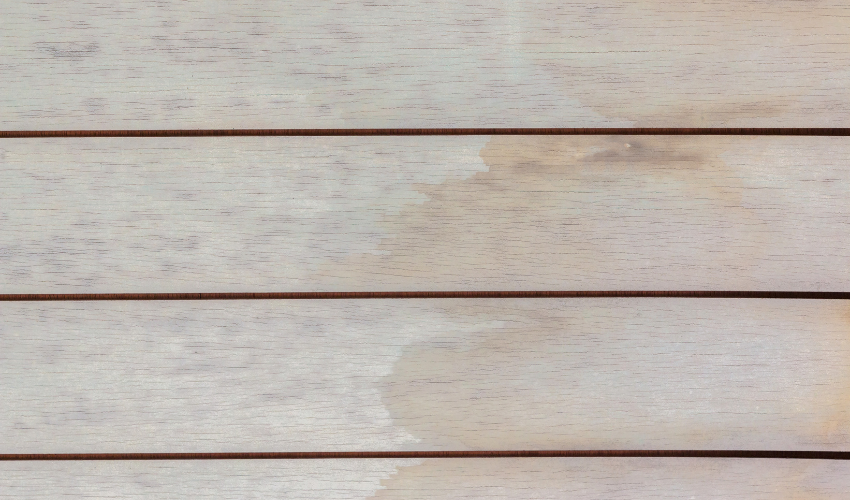Water stains on wood can be unsightly and difficult to remove. Whether it’s a spill from a drink or moisture left on a surface, water stains can ruin the appearance of your furniture, flooring, or other wooden items. The good news is that water stains are not always permanent and can often be removed with a variety of household items and techniques.
In this article, we’ll provide an overview of the most effective methods for removing water stains from wood, including the use of heat, moisture, vinegar, mayonnaise, toothpaste, and baking soda. We’ll also explain why wood turns white when wet and provide tips for preventing water marking. Whether you’re dealing with light or severe water stains, this article will provide you with the information you need to get your wood looking like new again.
How to Remove Water Stains From Wood
Removing water stains from wood can be a challenge, but it is not impossible. Here are some tips on how to effectively remove water stains from wood:
- Blot the stain: Start by blotting up as much of the excess water as possible.
- Use mayonnaise: Apply a small amount of mayonnaise to the stain and let it sit for several hours. Then, wipe it off with a clean cloth. (Learn more in our guide – How to Remove Water Stains from Wood with Mayonnaise).
- Lemon juice and baking soda: Mix equal parts lemon juice and baking soda to form a paste. Apply the paste to the stain and let it sit for several hours. Then, wipe it off with a clean cloth.
- Sand the surface: If the stain is still visible, you can try sanding the surface of the wood. Start with a fine-grit sandpaper and work your way up to a coarser grit.
- Apply a wood filler: If sanding does not work, you can try applying a wood filler to the stain. Choose a filler that is a close match to the color of the wood and apply it according to the manufacturer’s instructions.
- Try a wood bleach: If the above methods do not work, you can try using a wood bleach. Be sure to follow the manufacturer’s instructions carefully and test the bleach on a small, inconspicuous area of the wood first.
- Finish with wood stain or polish: Once the water stain has been removed, you can finish by staining or polishing the wood to match the surrounding surface.
It is important to remember that different types of wood and finishes may require different methods for removing water stains. If you are unsure about the best approach for your particular piece of furniture, consult with a professional.

Are water stains permanent on wood?
Water stains on wood are not always permanent, but they can be difficult to remove. The amount of time the water is left on the wood, the type of wood, and the finish on the wood can all affect the severity and permanency of the water stain. If caught early, water stains can often be removed using one of the methods listed in the previous answer. If the stain has set in for an extended period of time or has penetrated deeply into the wood, it may be more difficult or impossible to remove. In such cases, sanding or refinishing the wood may be the only solution.
What is the fastest way to remove water stains from wood?
The fastest way to remove water stains from wood would be to use a combination of heat and moisture. Here are the steps:
- Heat up an iron: Set the iron to a low heat setting and place a clean cloth over the stain.
- Apply the iron: Move the iron over the cloth in a circular motion for about 30 seconds. The heat from the iron will cause the moisture from the water stain to evaporate, lifting the stain from the wood.
- Wipe the area: After removing the iron, immediately wipe the area with a clean cloth to remove any remaining moisture.
- Repeat if necessary: If the stain is still visible, repeat the process until the stain has been removed.
This method is best used on light water stains that have not penetrated deeply into the wood. If the stain is more severe, you may need to try one of the other methods listed in the previous answer.
It is important to note that using heat on certain types of wood or finishes can cause damage, so be sure to test the method on a small, inconspicuous area first.

Does toothpaste remove water stains wood?
Yes, toothpaste can be used to remove water stains from wood. Here’s how:
- Apply toothpaste: Apply a small amount of white, non-gel toothpaste directly to the water stain.
- Scrub with a cloth: Scrub the toothpaste into the stain with a clean cloth, using circular motions.
- Wipe clean: Wipe the area clean with a damp cloth to remove any remaining toothpaste.
- Repeat if necessary: If the stain is still visible, repeat the process until it has been removed.
This method works best on light water stains and may not be effective on deeper or more persistent stains. It is important to note that some toothpastes contain abrasive ingredients that can scratch the surface of the wood, so it is best to test the method on a small, inconspicuous area first.
Why does wood turn white when wet?
Wood can turn white when wet due to swelling of the fibers in the wood. This can happen when the fibers absorb moisture and cause the surface of the wood to become raised. As the raised fibers dry, they can turn white or light-colored, leaving a noticeable mark on the wood. This is called “water marking” or “water spotting”.
Water marking is more likely to occur on wood that has a delicate or porous surface, such as pine or cedar, and can be more pronounced on wood that has a light-colored or unfinished surface. The severity of the water marking will depend on the type of wood, the amount of moisture absorbed, and the length of time the moisture is left on the surface.
To prevent water marking, it is important to quickly remove any spills or moisture from the surface of the wood and to keep the wood dry and protected with a finish that seals the surface. If water marking does occur, it may be possible to remove it using one of the methods listed in previous answers.
Conclusion
In conclusion, removing water stains from wood can be a challenge, but with the right techniques and household items, it is possible to restore the beauty of your wooden surfaces. Whether you’re dealing with light or severe water stains, it is important to act quickly to prevent the stain from setting in and becoming permanent.
By following the steps outlined in this article, you’ll be able to remove water stains from wood using heat and moisture, vinegar, mayonnaise, toothpaste, or baking soda. If the stain is persistent, you may need to sand the surface of the wood or refinish it.
To prevent water marking from occurring in the first place, it is important to keep wooden surfaces dry and protected with a finish that seals the surface. By following these tips and using the methods outlined in this article, you’ll be able to keep your wood looking its best for years to come.
Discover More Eco-Friendly Habits: Learn the Most Effective Ways to Save Water at Home.
